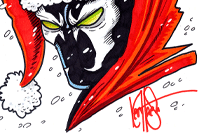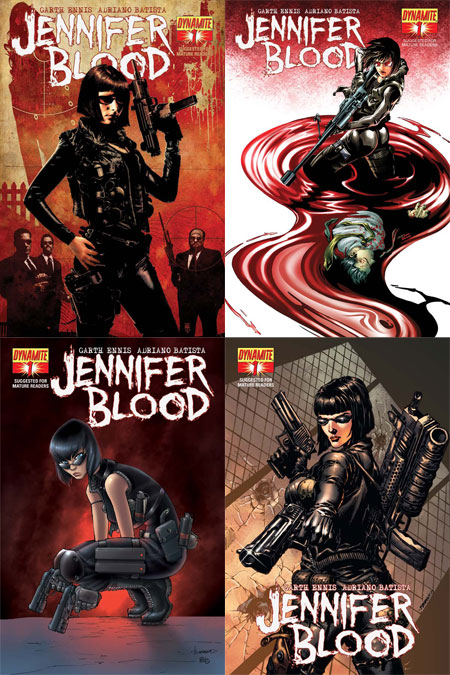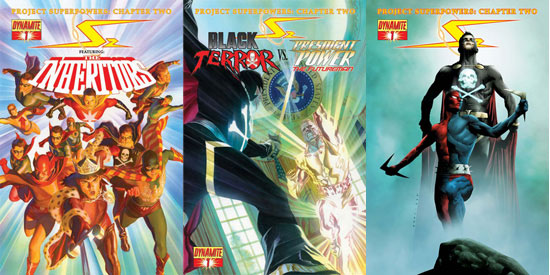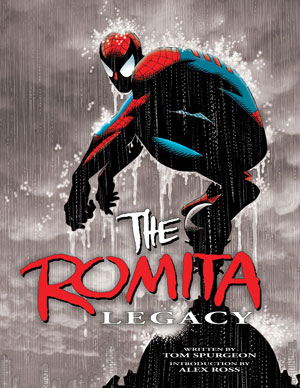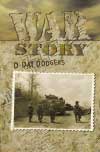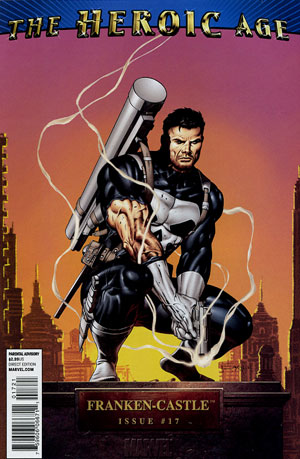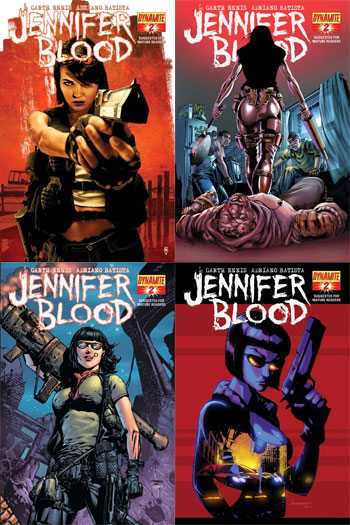|

|
PUNISHER The Punisher is a fictional vigilante and anti-hero in the Marvel Comics Universe. Created by writer Gerry Conway and artists John Romita, Sr. and Ross Andru, he first appeared in The Amazing Spider-Man #129 (Feb 1974).
Although sometimes considered a hero, the Punisher is a vigilante who considers killing, kidnapping, extortion, coercion, threats of violence and torture as acceptable crime-fighting tactics. Driven by the deaths of his wife and children, who were killed by the mob when they witnessed a Mafia gangland execution in New York City's Central Park, Frank Castle wages a one-man war on the mob and all criminals in general by using all manner of weaponry. A war veteran, Castle is a master of martial arts, stealth tactics, hand-to-hand combat, spatial planning and a wide variety of weapons.
The Punisher's brutal nature and willingness to kill made him a novel character in mainstream American comic books in 1974. By the late 1980s, he was part of a wave of psychologically troubled anti-heroes and was featured in several monthly publications, including The Punisher War Journal, The Punisher War Zone and The Punisher Armory. Two movie adaptations have been released, one in 1989 another in 2004, and a sequel to the 2004 film planned in 2008.
Introduction
The Punisher was created by Gerry Conway, and Ross Andru; who were the regular writer and artist, respectively, for The Amazing Spider-Man, with then-Marvel art director John Romita, Sr. working on the formal design. The Punisher was initially an antagonist of Spider-Man, although only due to being duped by the supervillain known as The Jackal. The character of the Punisher immediately became popular, and made appearances in the various Spider-Man titles and other series throughout the 1970s. Conway also helped design the character's distinctive costume, stating:
" In the '70s, when I was writing comics at DC and Marvel, I made it a practice to sketch my own ideas for the costumes of new characters - heroes and villains - which I offered to the artists as a crude suggestion representing the Image I had in mind. I had done that with the Punisher at Marvel. "
Initial series
In the early 1980s, artist Mike Zeck and writer Steven Grant proposed creating a Punisher series. The company was initially uncomfortable with the idea of a protagonist who kills in cold blood[citations needed]. However, as crime increased nationally throughout the decade, Marvel responded by testing the market for such a character - publishing though not initially promoting a mini-series whose premiere (Jan. 1986) was bannered on the cover as the first of four. After this first issue immediately sold out, Marvel expanded the miniseries to five issues (as then bannered on the cover of #2) and began active promotion.
An ongoing series, also titled The Punisher, premiered the next year. Initially by writer Mike Baron and artist Klaus Janson, it eventually ran 104 issues (July 1987 - July 1995) and spun off two additional ongoing series - The Punisher War Journal (vol.1) (80 issues, Nov. 1988 - July 1995) and The Punisher War Zone (41 issues, March 1992 - July 1995), as well as the black-and-white comics magazine, The Punisher Magazine (16 issues, Nov. 1989 - Sept. 1990), and The Punisher Armory (10 issues, no cover dates, starting 1990), a fictional diary detailing "His thoughts! His feelings! His weapons!" (as stated on the cover of #1). The Punisher also appeared in numerous one-shots and miniseries, and made frequent guest appearances in other Marvel comics, ranging from superhero series to the Vietnam War-era comic The 'Nam.
Decline
In 1995, Marvel cancelled all three ongoing Punisher series due to poor sales. The publisher attempted a relaunch almost immediately, with a new ongoing series title The Punisher, by writer John Ostrander, in which the Punisher appeared to willingly join and work for organized crime, and later confronted the X-Men and Nick Fury. Writer Christopher Golden's four-issue miniseries The Punisher: Purgatory (Nov. 1998 - Feb. 1999) posited a deceased Punisher resurrected as a supernatural agent of various angels and demons.
Revivals
A 12-issue mini-series characterized by black comedy, again titled The Punisher (April 2000 - March 2001) by writer Garth Ennis and artist Steve Dillon, under the Marvel Knights imprint, revived the character's popularity. An ongoing series (37 issues, Aug. 2001 - Feb. 2004), primarily by Ennis and Dillon, followed, succeeded in 2004 by an ongoing Ennis series under Marvel's mature-readers imprint, MAX.
In November 2006, the Punisher returned in a new The Punisher War Journal (vol.2) series, written by Matt Fraction and pencilled by Ariel Olivetti. The first three issues of the book are set during the Marvel Civil War event. It involves Castle taking on supervillains rather than his traditional non-superpowered criminal antagonists. He has also made appearances in the main Civil War series (issues 5, 6 and 7).
Marvel MAX imprint
The Marvel MAX version of the Punisher is set in the Marvel%20UNIVERSE%20'>Marvel UNIVERSE world but without superhero appearances (in fact, the only other Marvel%20UNIVERSE%20'>Marvel UNIVERSE character to appear in the unlimited MAX series thus far has been Nick Fury). Castle's timeline remained untouched when Marvel adjusted the timeframes of other characters. His history has never been altered or moved up, creating an unaddressed chronological anomaly. In order to preserve suspension of disbelief, Garth Ennis has refused to put any superheroes or supervillains in the MAX series, focusing only on more realistic foes.[citation needed]
The MAX version of the Punisher ages in real time, propelling him into his late 50s, significantly older than most of the mainstream Marvel Universe. On the cover of issue #44, it was revealed that he was born on February 16, 1950, but was later removed during the book's publication. Despite his age, his physical condition and health are well-maintained. The imprint also depicts that the Punisher has been an active vigilante for almost 30 years. Issue #19 specified that he had killed approximately 2,000 people, not including military personnel or the deaths in a story in which the Punisher causes a hydrogen bomb to be dropped onto the Pacific island Grand Nixon, where a General Kriegkopf has gathered 2,000 mercenaries, including the assassin known as The Russian .
Whereas the traditional Punisher stories remained within the United States and involved antagonists and settings of conventional domestic crime, stories of the Marvel MAX Punisher often focus on current events, ranging from corporate fraud to sex slavery and most commonly the War on Terror. Characters in these stories are all products of past or current environments, including operatives of the CIA, KGB, MI6, SAS and various militaries and militias from the Balkans and Middle East and terrorist cells like the IRA, all with agendas rooted in past conflicts like the Cold War or the Yugoslav wars.
In the miniseries Born, by Garth Ennis and Darick Robertson, Castle's roots are traced back to Vietnam, during his third tour of duty in Vietnam, where he undergoes a psychological and possibly supernatural transformation into the Punisher in order to survive a massive assault on his fortification by the combined forces of the Viet Cong and the North Vietnamese Army. The one-shot Punisher: The Tyger, by Ennis and John Severin, went even further and showed that Castle had lived with murders, deaths and criminals his entire life.
This capsule introduction appeared in The Punisher titles from 1987 to 1994: "When mobsters slew his family, Frank Castle vowed to spend the rest of his life avenging them. Trained as a Marine and equipped with state-of-the-art weapons, he now wages a one-man war against crime as the Punisher".
Early life and military career
Born in Queens, New York to parents of Sicilian ancestry, the young Francis Castiglione originally studied to become a Roman Catholic priest, but changed his mind because he was unable to forgive those who did evil. Eventually, Castle would enlist in the United States Marine Corps becoming a U.S. Marine Captain. He married his wife Maria, who was already pregnant with their first child prior to his enlistment.
During his time in the USMC, Castle graduated from basic training and then went on to Infantry School. Immediately after, he went through the USMC's Reconnaissance, Force Reconnaissance, and Sniper Schools. Attaining dockets, Castle was permitted to go through U.S. Army Airborne School, and U.S. Navy Underwater Demolition Team training, becoming qualified as a Navy SEAL (Sea, Air and Land). While still in training, Castle met Phan Bighawk, a Native American Scout. He was assigned to be Castle's guide, and through Phan, he learned how to survive in the wilderness.
Following his training, Castle would serve in the Vietnam War in the Special Forces Unit as a point man. He fought in numerous engagements and was the only survivor (from both sides) of a Viet Cong assault on Valley Forge Firebase in 1971. For heroism in the line of duty, he was decorated with the Congressional Medal of Honor, the Navy Cross, 3 times the Silver star and Bronze Stars, and 4 times the Purple Heart.
While still in his first tour, Castle met Lieutenant Burt Kenyon. Kenyon was a soldier serving in the same combat company as Castle in Vietnam. When the platoon came under fire, Castle was badly injured by a V.C. explosive and surrounded by the enemy. However, Kenyon calmly appeared, gunned down the Viet Cong and dragged Castle to safety. Kenyon said to Castle that he now owes him his life. Two months later, Kenyon was declared mentally unfit for service and was discharged. Years later, Kenyon became a hired assassin known as "The Hitman" and died in a battle against Castle.
After finishing his first tour of duty in Vietnam, he signed up for a second tour. Castle served a total of 4 years in the Vietman War (1968 to 1971). Six years later (1976) after the American involvement in Vietnam ended, Castle ran Special Black Ops training missions for Marine Recon Commandos in the upper New York State area.
Death of family
In 1976, Castle, his wife, Maria and their children Lisa and Frank Jr. were in New York's Central Park for an afternoon picnic when they witnessed a Mafia gangland execution; an informant had been hanged from a tree. Seeking to eliminate all witnesses, the Costa crime family murdered them on the spot; however, Castle survived. Even though Frank was able to identify all of the shooters, the police were unable to help Castle in his quest for justice. They were tied in too deeply to the powerful Costa family. Grieving over his family's death and outraged at the incompetence of the police, Castle decided that the only punishment criminals might receive is that of physical destruction. Shortly thereafter, he emblazoned his body armor with a symbol of a death's head, and exacted his revenge. Since then, he has waged a one-man war on crime, taking the name "The Punisher".
Castle has since devoted his life to eradicating organized crime, using the nom de guerre of the Punisher, using his combat experience (four years as a United States Marine Corps Captain in a special operations unit in the Vietnam War), guerilla warfare (combat assault attacks, assassinations, ambushes, hit and runs, bombings, using the enemies' own money, weapons and supplies against them), urban warfare (using the crowded city of New York to blend in and disappear), psychological warfare (putting fear into the hearts of criminals), using detective-like skills (talking to people, reading obtained files on the people he goes after, tracking and surveiling the enemy), always adapting to the enemy such as using the Mafia's own methods and tactics against them (interrogating and torturing criminals to death in order to get information from them) and whatever resources and means may be necessary to do so, ranging from light anti-tank weaponry, to enraged polar bears, piranhas, and even a hydrogen bomb.
Vigilante crusade
The Punisher has fought virtually every known criminal organizations including the Italian Mafia, the Russian Mafia, the Japanese Yakuza, the Colombian and Mexican drug cartels, the Chinese Triads, Jamaican Yardies, the Irish Mob, biker gangs, street gangs, gunrunning militias, muggers, killers, rapists, psychopaths, sadists, pedophiles and even corrupt cops. The Punisher also assaults such criminal business enterprises as drugs, weapons smuggling, money laundering and human trafficking. The Punisher has been fighting organized crime for long enough that he knows their modus operandi and can often predict their actions. Many of these organizations have tried to kill the Punisher, using both their own men and hired contract killers.
In his vigilante crusade, the Punisher has crossed paths with several costumed crimefighters, including Spider-Man and Daredevil. These encounters have often resulted in his incarceration. The Punisher has been rated as one of the most dangerous criminals alive. When he was incarcerated in New York's Ryker's Island prison, (a Marvel%20UNIVERSE%20'>Marvel UNIVERSE version of real-life Rikers Island) though heavily outnumbered in gang fights, the Punisher had routinely killed armed, homicidal criminals with frightening ease, sustaining almost no injury. Due to his proficiency in fighting, he is rarely accosted in prison environments. Adhering to his military philosophies, the Punisher constantly trains whenever he is not out on action. He exercises fanatically to maintain his impressive physical conditioning and sticks to a balanced diet whenever possible.
The Punisher is highly mobile. He has many bases of operations and does not limit himself to working only in New York city. He has been to many places in the U.S. and around the globe, fighting crime such as the British Isles, Latin America (Central and South America), Europe, Russia and Afghanistan. The Punisher has an extensive criminal record due to his activities. The law enforcement such as the police, the FBI, the CIA and even S.H.I.E.L.D. are aware of his existence and have made many attempts to capture him; however, many rank-and-file law enforcement officials are reluctant to take action against him because most of them support his war on violent crime.
Relation with superhero community
While the Punisher most often fights normal criminals, he has also had run-ins with some of Marvel's superhuman villains, including Bushwacker, The Reavers and Bullseye. Circumstances have even led him to battle Spider-Man, Daredevil, The Hulk and Wolverine, in addition to Marvel superspy Nick Fury. Due to the Punisher's homicidal nature, few of his foes became recurring antagonists, the most notable of these being the severely scarred enforcer Jigsaw. The Punisher also acquired a nemesis in the form of the Kingpin, a longtime Spider-Man and Daredevil foe, and developed enmity with Daredevil himself, who likewise abhorred and fought against the Punisher's brutal methods. Castle's sidekick for a time, Microchip, was a techno-geek who could seemingly hack anything.
Civil War
During the Civil War limited series, many superheroes in the rebellion opposing the Superhuman Registration Act object to the Punisher joining their ranks even after he rescues Spider-Man from the supervillains Jester and Jack O'Lantern, whom he kills. But when the Punisher murders the supervillains Plunderer and Goldbug, who arrive peacefully to join the rebellion, Captain America immediately ejects the Punisher.
Following the events of Civil War and the death of Captain America, Punisher adopts a Captain America-esque costume.
Abilities and training
The Punisher possesses the normal human strength of a man, who engages in rigorous regular physical exercise. Frank engages in a brutal regimen of calisthenics, katas and firing range practice daily, maintaining his combat skills.
The Punisher is a seasoned combat veteran of exceptional skills. A former U.S. Marine Captain with a distinguished combat record, Castle underwent sniper (his second tour in Vietnam was served as a sniper, as implied in "In the Beginning") and reconnaissance training while in the Corps. He also received a U.S. Navy SEAL, UDT (Underwater Demolition Team), LRRP (Long Range Recon Patrol) training and airborne training with the U.S. Army and U.S. Navy Special Forces. It has also been revealed in both the Marvel Knights and MAX imprints of The Punisher that Castle did receive training, skills and expertise from the Australian Army's Special Air Service Regiment when he was on exchange with Australian military forces operating in South Vietnam during the Vietnam War (It is also noted that while Castle was on exchange with the Australian SAS in Vietnam, he met Yorkie Mitchell, a British SAS soldier who was on exchange with the Australians at the same time. Mitchell would later become an agent for the British intelligence agency, MI6 and he would cross paths and work with Castle on a number of occasions during the Marvel Knights and MAX runs of The Punisher).
Castle is well-versed in the arts of warfare and hand-to-hand combat. His styles of choice being Nash Ryu Ju Jitsu (the four-style martial art founded by his Sensei Adam Nash and the Marine Corps LINE combat system). He is an exceptional knife fighter who carries up to 3 or 4 different types of edged weapons, preferring the knife he learned to fight with in the USMC: the Ka-bar (in the movie he killed Harry Heck with a ballistic knife).
Armed solely with conventional weapons and motivated by a fanatical hatred for criminals like those who murdered his family, the Punisher has single-handedly incapacitated up to a dozen well-armed and experienced opponents in a single encounter and escaped almost uninjured. It is his military training and his attention to detail that allows him to achieve this. He is an exceptional marksman who is sometimes depicted as being ambidextrous in this respect. The Punisher Armory series illustrates some of his thinking and training.
Weapons
The Punisher's arsenal.The Punisher employs a vast array of conventional firearms including machine guns, rifles, shotguns, handguns, knives, explosives and other weapons culled from common and organized criminals and military sources during his operations. A vast majority of his weapons have roots in military forces around the world, and typically employs weapons and accessories limited to military operations. He maintains and stores all his weapons and supplies in various warehouses and safehouses throughout New York, New Jersey, Connecticut and various other states. He employs this exhaustive arsenal in his war on criminals on a regular basis.
The Punisher often customizes his weapons for greater effectiveness with both standard and custom items including magnified optics, reflex sights, night vision scopes, flashlights, grenade launchers, sound and flash suppressors, bipods, high-capacity magazines and drums and various ammunition including hollow point or armor piercing bullets.
Throughout the Punisher's crusade against criminals, he occasionally used a number of high-tech transportations. During his early series, he used "battle vans" specially built and customized by his then-partner, Microchip. These vans were heavily armored, loaded with high-powered ammunitions with advanced telecommunication capabilities. Castle used these vans for surveillance and weapons transportation. He has also used motorcycles, helicopters, speed boats, or whatever he can find and use. In the Marvel MAX series, Castle resorts to basic equipment to track down his targets, including various cars, SUVs and vans.
The Punisher's first outfit was a form-fitting black Kevlar bodysuit with a large white skull on his chest. According to the character, this draws the attention and the aim of the criminals to his heavily armored body, instead of his more vulnerable head. Each tooth of the skull is actually spare ammunition for firearms. Castle has used this costume on occasion in mid-2000s stories outside of the Marvel MAX imprint.
The Marvel MAX Punisher chooses not to utilize any costume outside of a black shirt with a white skull splashed across the front. His other clothing, which has included combat boots, blazers, leather jackets, trench coats, bulletproof vests, body armor, battle dress uniforms and camoflauge cloaks has been for the sake of protection or camoflauge in urban and wilderness areas.
Personality
The Punisher differs from the majority of comic book protagonists. Whereas all are vigilantes in that they work outside the traditional system of law and order, the Punisher is a remorseless, cold-blooded killer. This often creates friction when he is forced to work alongside heroes like Spider-Man, Captain America, and Daredevil, many of whom abide by a "no-killing" rule which they insist he follows during collaborative efforts.
The Punisher possesses no superhuman abilities and succeeds solely through ingenuity and the rigorous training of his military upbringing, a finely-honed killer instinct and an extensive arsenal of weapons culled from fallen foes and military allies.
Unlike most comic book heroes, Castle also has no dual identity, no "real world" job, no known hobbies and only has few friends. He avoids capture by the authorities not just because of his extensive use of false documents, but also their latent admiration of his work, by eliminating criminals that the police cannot touch for various reasons. He spends nearly all of his time planning his next hit, stopping only to recover from injuries or fatigue. Money taken from criminals is used to purchase food, weapons, ammunition, and pay the rent of one of his many safehouses.
The Punisher also disregards what the police and the public think of him, and has been known to kill corrupt cops. In doing so, it stirred the police into heightened action against him and as such, he is viewed as a dangerous criminal by the public and by most members of the superhero community.
Views on criminal-justice system
Castle's years of vigilantism have made him increasingly cynical about the capabilities of the American justice system, especially in regard to its failure to successfully prosecute his family's homicide, due to the witnessed killer's false alibi and the mob's influence in the New York City Police Department. Throughout both the Marvel Knights and MAX run of The Punisher, the given reason Castle kills those he regards as criminals (which include both circumstantially alleged and incontrovertible individuals) is his desire not to see average people becoming victims of crime and enduring the same kind of pain and loss he experienced.
The way writers have approached the Punisher's response to the criminal justice system has changed many times over the years, though not since his earliest days as a standalone character (when he would occasionally use "mercy bullets" to make his actions more palatable) has the Punisher been portrayed as a hero. When originally conceived, his approach was hard-edged, and frowned upon by more heroic characters, such as Spider-Man. While that much remains true, the 2000s have seen a more considered take on the character's behavior. There are repeated references to the Punisher's contradictory and paradoxical views on the criminal justice system, though in general Castle never addresses his morality in any depth; he justifies his actions through such generalizations as, "That's another monster gone". Minor characters who question his motivation sometimes reach violent ends, with Castle refusing discussion and turning violent if pressed. Even villains have sometimes pointed out the web of justifications and rationalisations within which the Punisher operates.
Castle has also stated he does not want others to follow his path, on the grounds that his personal war against criminals is his alone, and he harbors resentment toward other (usually short-lived) vigilantes, taking exception at what he sees as their lack of "professionalism".
This article uses material from Wikipedia and is licensed under the GNU Free Documentation License.All material is compiled from numerous sources and may not be accurate. Dynamic Forces, Inc and all of its subsidiaries cannot guarantee the validity of the content. |
 |

